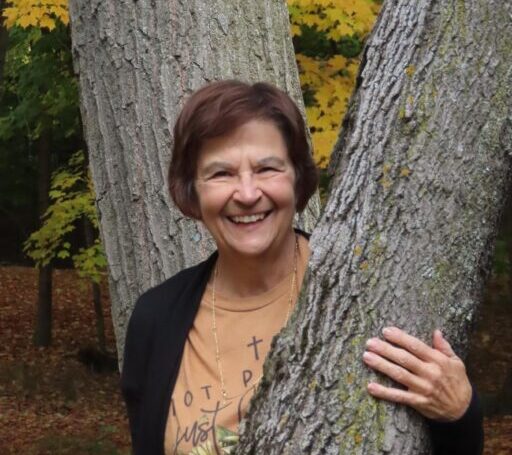My best friend in my early grade school years had the cutest dimples on each cheek. As far as I can remember (that was 55 years ago) Jackee was the only one in our class of 20 kids that had these special features. I was so envious. I thought, if I could just have dimples like that, I would be as cute as Jackee. Sometimes I would try pushing dimples into my cheeks with my thumbs, but I had the most stubborn cheeks!
Years past and it was in High School Biology class that Mr. Schuler talked about this very thing. My ears perked up and I thought this might be my chance to finally get dimples. What I heard was disappointing. I was never going to have dimples! He explained that these kinds of characteristics are autosomal genetic traits, meaning that it’s up to our genes that hang on to our chromosomes that determine whether we get a trait or not. Mr. Schuler had been my favorite teacher before this. The only thing he said that made me feel any better was that dimples are created by a mutant gene. I felt a little smug then, knowing my genes weren’t mutant.
These autosomal traits are considered either dominant or recessive. Dominant traits can be passed down from only one parent, where as recessive traits have to be passed down from both parents. Dimples are a dominant trait, meaning Jackee could have gotten them from her mother or her father. However, interestingly the dimpled chin (sometimes known as cleft chin or butt chin) is a recessive trait so both parents have to be involved to pass this on to their offspring. This would mean that Kirk Douglas’s well known dimpled chin could not be blamed on one parent or the other – they both contributed. I don’t think Kirk Douglas minded what was passed along. It has been said that the costume designers on the set of his films picked out certain ties to emphasize his cleft chin, because he was proud of it. Those of you that can’t remember back to the Kirk Douglas era, you may notice the cleft chin when watching Kirk’s son, Michael, Ben Affleck, Sandra Bullock, John Travolta, or Dr. Phil.
A few other autosomal dominant traits that can intrigue us are widow’s peaks such as Paul Ryan has causing his hair line to dip in a “V” on his forehead, freckles, long eyelash length, and almond shaped eyes. And if you are so talented as to be able to roll your tongue upward on each side, this is not a talent at all, but a dominant autosomal trait. Any traits opposite of those mentioned would be recessive traits and would need to be contributed by both parents such as a straight hairline, no freckles, short eye lashes, and round eyes.
A very interesting syndrome known as the ACHOO syndrome, short for autosomal dominant compelling helioopthalmic outburst syndrome is now believed by some to be an autosomal dominant trait. It is characterized by uncontrollable sneezing in response to the sudden exposure of bright light following a darkened environment such as when coming out of a theater or passing through a long tunnel. Most people with the syndrome sneeze 2- 3 times, but there are those that can sneeze up to forty times. This is not a new phenomenon as Aristotle studied it as far back as 300 BC.
Forty five years ago (thanks to Mr. Schuler) I resigned myself to the fate of being flat cheeked. However, today, due to modern plastic surgery, dimples are within reach. It’s been something to think about, but I’ve come to the conclusion that dimples at 62 aren’t as important as they were at 10. Instead of using my time to nurse sore cheeks, I think I’ll go down to the theatre on a bright sunny day. I’ll park where I can observe those coming out of the side door of the matinee and do some research of my own. It makes me sneeze just thinking about it.
Until next month – if you’ll keep on readin’, I’ll keep on writin’.

Cathy Harper
Very interesting.